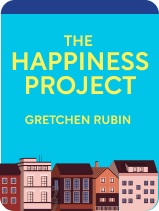

This article is an excerpt from the Shortform book guide to "Spark" by John Ratey. Shortform has the world's best summaries and analyses of books you should be reading.
Like this article? Sign up for a free trial here .
Does exercise help with stress? How can exercise relieve stress if exercise itself is a stressor?
Exercise has a powerful role in controlling the brain’s stress response system. Specifically, exercise induces mild acute stress (which makes you stronger) and helps combat chronic stress (which wears down your body over time).
Keep reading to learn about the benefits of exercise for stress relief.
Exercise and Stress
To understand the benefits of exercise for stress relief, it’s important to understand what stress is in the first place. Ratey defines stress as anything that initiates activity at the level of our cells. By this definition, our environments present countless stressors. For example, when we move, we stress both our muscles and the brain cells involved in controlling that movement. When we eat vegetables such as eggplant, our cells activate as they work to process toxins the plant has created to protect itself. When we hear an unexpected noise, our brains initiate a stress response as they work to assess the source of the noise and whatever threat it might pose.
(Shortform note: Another biological understanding of stress is that it’s anything that threatens homeostasis. Homeostasis is a state in which the body’s physical systems are in balance. So anything that disrupts that maintenance is a stressor.)
Under this narrow, biological definition, stress is neither inherently good or bad; it’s a fundamental biological process. If the body can handle the effects of the stress—for example, if cells can clean up the waste produced by oxidative stress—then the stress won’t have negative effects at the cellular level. It’s when the body can’t keep up with the cellular effects of stress that it starts to feel negative effects. When that happens, we end up feeling stressed, which Ratey explains is a psychological and emotional reaction to cellular stress events.
(Shortform note: Some experts take a different view of just how stress is neither good nor bad. Defining it as a psychological challenge, they observe that people who seem to handle stress well are motivated by it—seeing it as an opportunity to rise to a challenge. By contrast, those who don’t handle stress well are demotivated by such a challenge. These experts suggest that cognitive reframing (thinking of the stressor differently) can help to make stress work for you.)
How Exercise Helps With Stress
Given the risks associated with chronic stress, it’s important to understand how exercise can be used to limit our exposure to its negative effects.
Exercise Calms Our Mind and Body
Exercise stimulates the release of proteins that grow and strengthen the neural network: BDNF, VEGF, and FGF-2. This reduces the likelihood that our brains will misperceive threats or lose control of the body’s stress-response system. Beyond this, Ratey argues, exercise counteracts the disempowering effect stress and fear has on your mind. As an activity you voluntarily pursue, it’s empowering, which reinforces a positive feedback loop that bolsters your resistance to the stressors of life.
Exercise Is a Mild Stress
Ratey contends that exercise, as a form of mild acute stress, is like an inoculant that builds resilience, toning all the machinery of the brain and body and tamping down our trigger-happy stress response system. He points out that this effect is largely a consequence of the way our cells recover after exercise-induced stress—this is part of the activity and recovery process of the body’s stress response. In addition to this recovery mechanism, the broader effects of exercise on the brain condition us to handle stress better.
| New Insights Into How Exercise Acts Like an Inoculant A recent study has added to our understanding of how exercise acts like an inoculant: Exercise increases the amount of galanin in the brain. Galanin is a neuropeptide that exists in animals of all kinds, and not having enough of it has been linked to heightened stress sensitivity and stress-related disorders, such as anxiety and depression. Knowing this, clinicians have tried to raise galanin levels in patients by using medications, but this doesn’t work in many cases. The new study found that mice made to exercise had more galanin in their brains than those that didn’t exercise—and that those higher galanin levels made them more resistant to stressors they were later exposed to. This finding supports the use of exercise as a treatment for raising galanin levels and increasing stress resilience. |

———End of Preview———
Like what you just read? Read the rest of the world's best book summary and analysis of John Ratey's "Spark" at Shortform .
Here's what you'll find in our full Spark summary :
- How exercising can help with addiction, anxiety, and depression
- A look at how exercise optimizes brain function and supports mental health
- What exercises are the most beneficial, and how to stick to a routine






